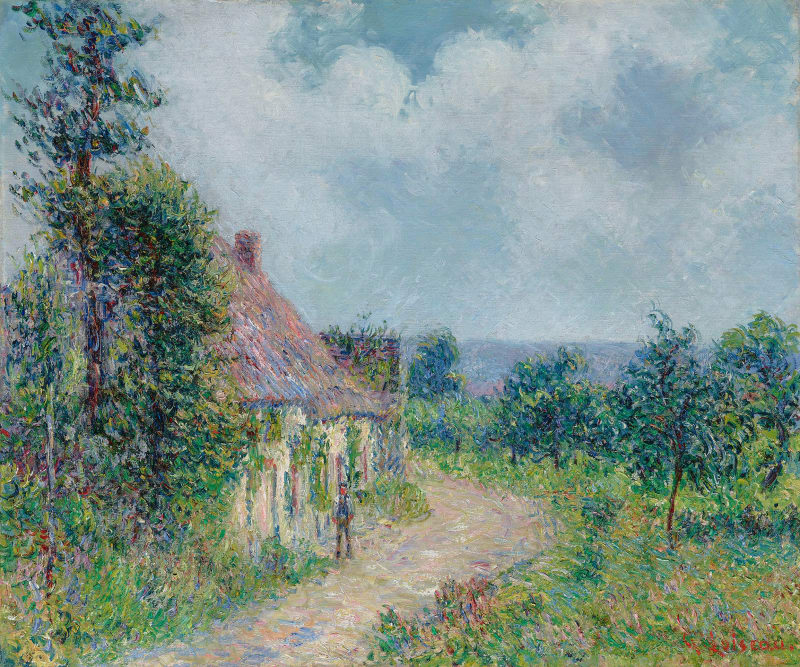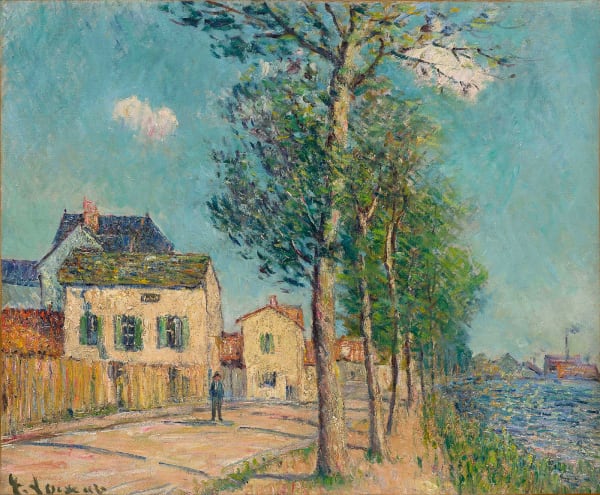Gustave Loiseau French, 1865-1935
Born into a family of merchants, Gustave Loiseau initially worked as a decorator. In 1887, he received a small inheritance from his grandmother, which provided him with financial stability and enabled him to concentrate entirely on painting.
He enrolled at the Ecole des Arts Décoratifs in Paris and later spent six months in Fernand Quignon’s workshop.
Disappointed with studio painting and preferring plein-air painting, Loiseau studied at the Beaux-Arts in Paris for a year before joining his friends, Henry Moret and Maxime Maufra in Pont-Aven, in Brittany, an important artist colony.
There he pursued his passion for landscape painting, and through his meeting with Paul Gauguin, developed a more personal aesthetic expression.
In 1893, he became a member of the Society of Independent Artists and exhibited six paintings at their Salon. Loiseau was under contract to Durand-Ruel, from 1897, who gave Loiseau his first major exhibition in 1901.
Having been influenced by the Pont-Aven School, Loiseau turned to Impressionism. Like the Impressionists, he painted many landscapes of Ile-de-France, but also frequently travelled, spending his summers by the coast, in Brittany and Normandy.
Influenced by artists like Monet and Pissarro, whose artwork he observed at length, Loiseau transcribed the effects of light, as reflections in the water, and as atmospheric phenomena. Through these interests, Loiseau became increasingly sensitive towards nature and its wonders. Attentive, particularly, to nature's inner forms, which added a personal and subtle touch to his style and compositions. Loiseau firmly established himself as major representative of the Post-Impressionist era.
The artist was honoured a great number of exhibitions in Europe and the United States. His work is in the collection of the following museums Chicago Art Institute, Chicago; Musée d'Orsay, Paris; J.Paul Getty Museum, Los Angeles; Musée Thyssen-Bornemizsa, Madrid.
-

BRAFA
23 Jan - 2 Feb 2025For BRAFA’s 70th Anniversary and our first participation in the fair, we are delighted to present a rare selection of 19th and 20th-century French works, showcasing the rich diversity and...Read more -

TEFAF Maastricht 2018
10 - 18 Mar 2018For the 2018 edition of TEFAF Maastricht, Stoppenbach & Delestre is pleased to present a curated exhibition entitled Brittany from the Pont-Aven School to Post-Impressionism, which will include 15 works,...Read more




